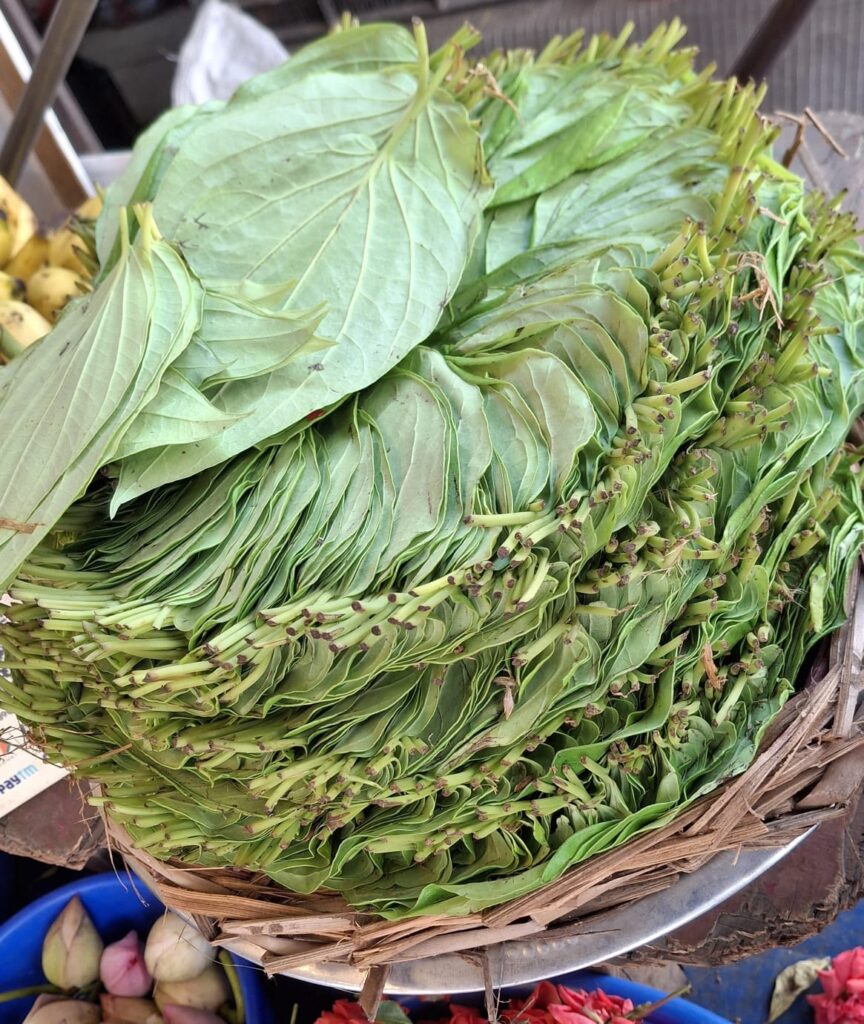The Kumbakonam Vetrilai (betel leaf or paan leaf) has recently been awarded the prestigious Geographical Indication (GI) Tag by the Government of India. This recognition highlights the unique qualities of the betel leaf grown in the fertile Cauvery River basin and safeguards its authenticity for farmers and consumers alike.
About Kumbakonam Vetrilai
The Kumbakonam betel leaf has been cultivated for centuries in the lush lands of Thanjavur district, Tamil Nadu. The combination of alluvial soil, organic content, and Cauvery’s irrigation gives this leaf its distinctive taste and aroma.
- 🌿 Appearance: Dark to light green, oblong, heart-shaped leaves.
- 🌿 Taste: Mildly pungent with a refreshing aftertaste.
- 🌿 Regions of Cultivation: Kumbakonam and its surrounding villages such as Ayyampettai, Swamimalai, and Rajagiri.
- 🌿 Usage: A staple in South Asian households, the Kumbakonam betel leaf is central to preparing paan, a popular post-meal chew.
- 🌿 Exports: Known for its superior quality, it is exported to several international markets.
The Harvesting Process of Kumbakonam Vetrilai
Cultivation of Kumbakonam betel leaf is rooted in traditional farming practices passed down through generations.
- Kolunthu Vetrilai (First Leaves): Appear 20–25 days after planting.
- First-Year Harvest (Maaruvethalai): Occurs between the 7th and 12th month. These larger leaves have a shelf life of 6–7 days and fetch the highest market value.
- Second-Year Yield (Kelavethalai): Leaves are smaller and moderately priced.
- Third-Year Yield (Kattavethalai): Smaller in size with lower yield compared to the first year.
This cycle ensures continuous supply, while the first-year leaves remain the most prized.
Why Did Kumbakonam Vetrilai Receive the GI Tag?
The GI tag ensures recognition of products linked to their geographical origin and unique qualities. The Kumbakonam betel leaf earned this status because:
- ✅ It thrives in the organic-rich Cauvery delta soil.
- ✅ It has a distinctive pungent taste, aroma, and glossy texture.
- ✅ Cultivation techniques are unique to the farmers of Kumbakonam.
This official recognition protects the product from counterfeits, increases market value, and provides farmers with better opportunities for domestic and international trade.
Cultural & Religious Significance
The betel leaf holds a sacred place in Tamil Nadu’s culture. It is offered in temple rituals, weddings, and festive occasions, symbolizing prosperity, respect, and good fortune. By receiving the GI tag, the Kumbakonam Vetrilai now carries not just commercial value but also cultural heritage preservation.
Kumbakonam Vetrilai FAQs
Q1: Why is Kumbakonam famous for betel leaves?
Ans: The uniqueness comes from the Cauvery River basin soil, which is rich in nutrients and organic matter, giving the leaves their signature taste and quality.
Q2: Which countries are famous for betel leaf cultivation?
Ans: Major betel leaf growing countries include India, Sri Lanka, Thailand, and Bangladesh. The Kumbakonam betel leaf now stands out as one of the most recognized varieties globally.






Leave a Reply